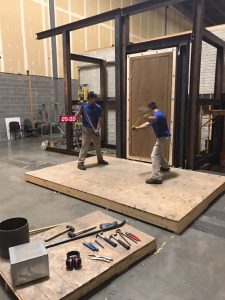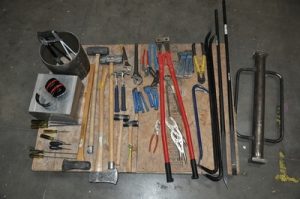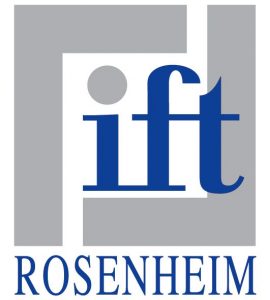SECURITY CLASSES
What security class do I need?
A new classification of reinforced door based on burglar resistance took force in Europe. A new standard EN 1627:2011 (security classes RC) replaced the old one that was in action since 1999. The old standard (security classes WK) required only one point of the door to be tested for burglar resistance. A tester was free to decide which point to test. The new standard requires testing all the surface of the door, point by point every 10-20cm. That significantly increased duration of the test. According to the old requirements it was enough to test one point of the door for 10min. and the door was granted security class WK4. Now multiple points of the door have to withstand 10min. each to get security class 4 (RC4). Our door SKYDAS PREMIUM was tested for 77min. and the door withstood! Some other modifications were also made: new break-in tools were added in testing process, the strength of an impact was increased, higher requirements for the locks introduced. Doors SKYDAS (RC2-4) were successfully tested and approved by this new standard EN 1627:2011.
The classes of burglar resistance according to the newest European Standard EN 1627:2011
| Security class RC | Burglary type | Use | SKYDAS door model |
| 1 |
Basic protection against burglary by the use of physical force
|
Premises without increased risk of burglary | __ |
| 2 |
Occasional burglar uses basic burglary tools
|
Increased protection for normal housing security | Skydas Standart 2 |
| 3 |
Experienced burglar uses heavy duty drilling and hammering tools
|
High level of security for the premises in view of increased risk of burglary | Skydas Standart 3 |
| 4 |
Experienced burglar additionally uses electric saws and power drilling tools
|
Extra high level of housing protection in view of high risk of burglary | Skydas Premium Plus |
| 5 |
Experienced burglar additionally uses power cutting and heavy duty drilling tools
|
Extremely high protection for military and industrial premises. Minimum door weight- 300 kg | __ |
| 6 |
Experienced burglar additionally uses power cutting and heavy duty drilling tools
|
Extremely high protection for military bunkers, etc. Minimum door weight- 500 kg | __ |

U.S. Department of State Diplomatic Security Forced Enrty and Balistic Resistance of Structural Systems, SD-STD-01.01, Revision G
| Security Class |
Burglary type | Use | SKYDAS door model |
|
5 min |
Team of two testers in good physical condition uses heavy duty burglary tools. 3 door zones are tested, 5 min each: – center of the door-leaf, – side of locks, – hinge side. Total attack time – 15 min. Inswing and outswing doors tested. |
High level of security for the premises in view of increased risk of burglary |
|
|
15 min |
Team of six testers in good physical condition uses heavy duty burglary tools. 3 door zones are tested, 15 min each: – center of the door-leaf, – side of locks, – hinge side. Total attack time – 45 min. Inswing and outswing doors tested. |
Extra high level of security in view of high risk of burglary |
|
| 60 min | Not tested |
Security Class FE 5 Testing Tools:


Security Class FE 15 Testing Tools:


Burglar Resistance Class 2
Burglar resistance class 2 door can withstand against occasional burglar uses simple tools.
The tools used to test doors to burglary resistance class 2 (RC2) by EN 1627:1627.


SKYDAS STANDART 2 tests of burglar resistance in IFT Rosenheim laboratory in Germany.

Burglar Resistance Class 3
Burglar resistance class 3 protects against burglaries using heavy duty tools.
The tools used to test doors to burglary resistance class 3 (RC3) by EN 1627:2011.



SKYDAS STANDART 3 tests of burglar resistance in IFT Rosenheim laboratory in Germany.

Burglar Resistance Class 4
Burglar resistance class 4 doors protect your property from experienced burglar using saws and electric drilling tools.
The tools used to test doors to burglary resistance class 4 (RC4) by EN 1627:2011.



SKYDAS PREMIUM PLUS tests of burglar resistance in IFT Rosenheim laboratory in Germany.





